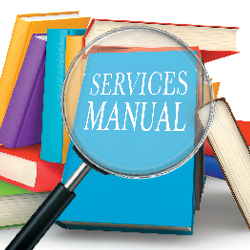|
REGISTRATION REQUIRED
exhibiting 101
 Trade Show Lighting Dos and Don'ts
A calculated lighting plan can make your exhibit shine like a diamond without breaking your budget – if you follow these simple rules. By Betsy Earle
"Once the lighthouse is seen, the rest of the sea is ignored." This proverb applies to an expanse of 10-by-10s as much as it does treacherous coastlines. A well-lit exhibit is going to stand out and lure passing attendees as effectively as an ocean siren enchants nearby sailors.
Trade show lighting used to be a costly add-on that was often limited to larger exhibitors with bigger budgets, and it was frequently dominated by halogens that cast yellow illumination and were searing to the touch. The proliferation of inexpensive, long-lasting, and cool-running LEDs has put a range of lighting options in the hands of smaller exhibitors, but many marketers still think that in-booth lighting plays second fiddle to exhibitry, graphics, and messaging. The reality is that lighting is a fundamental part of your marketing message, as it implicitly and explicitly conveys significant information about your brand. When considering your lighting options, here are some dos and don'ts that apply to both logistics and marketing. Don't use halogens. Some of you may see the word "halogens" and scratch your head, but it's not unusual to spot older exhibits that still use these antiquated elements, especially at smaller regional events. For many reasons, LEDs are the way to go. They're safer, less expensive, don't generate heat, and are up to 85 percent more energy efficient than halogens. What's more, halogen lights are prohibited in many convention centers. When it comes to disposal, halogens can generally be put in the trash, although some cities' recycling programs will accept them. Do understand lumens. A lumen is the measure of total quantity of visible light emitted by a source per unit of time. A watt, on the other hand, is not a measurement of brightness but a measure of power. Since a more efficient light puts out greater brightness using less wattage, you're going to get more illumination from an LED with the same number of watts as a halogen or incandescent bulb. Levels of brightness will depend on the manufacturer, but broadly speaking, an 8- to 12-watt LED will emit around 800 lumens, or the equivalent of a 60-watt incandescent. Don't waste your money on consumer puck lights. I've seen many exhibitors try to add accent illumination to their booths with these palm-sized lights. However, in most situations, battery-operated puck lights from big-box retailers aren't bright enough to be seen on a show floor. Before I knew better, I bought of stack of 10 such lights in a last-minute scramble to add a healthy glow to my client's booth, and I was incredibly disappointed in the results. That said, I have seen puck lights used with some success inside small, shallow display cases, such as those containing jewelry and other reflective items that don't need much illumination to shine. Do pay attention to the light temperature of your LEDs. Just as white paint comes in countless shades, so too does light, which is generally divided into "warm" and "cool" tones. Lighting hues are measured using the Kelvin scale, which gauges illumination based on its resemblance to natural sunlight. The higher its number of Kelvins, the more a light resembles the sun shining on a clear day. Warm light with a lower Kelvin rating (e.g., 2,000K - 3,000K) tends to have a yellow undertone, while cool light with a higher Kelvin rating (e.g., 4,600K - 6,500K) has a blue undertone. Neutral white light falls in the 3,100K - 4,500K range. In my opinion, cool lighting tends to pop on the show floor and seems a bit more vibrant and modern, while warm lighting evokes the coziness of home. Whatever choice you make should depend largely on your brand positioning and the vibe you want to create. For example, it would feel a bit peculiar to step into a cutting-edge software company's exhibit that is lit like a log cabin, unless, say, the booth was designed around a steampunk theme. Once you set the tone, so to speak, make note of the light temperature you've selected to ensure that future additions, purchases, and replacements are consistent. We've probably all seen a booth in which one LED arm light is casting a different color of light than its neighbors. That's because someone swapped in a bulb with a higher or lower Kelvin rating. Avoid this eyesore by recording the temperature of your exhibit's lighting and sticking as close to this number as possible when replacing defunct LEDs. A booth illuminated with a patchwork of different lighting colors doesn't look too professional. Don't forget wire management. For both aesthetic and safety reasons, it's essential to create a wire-management system in which your cables are safely tucked under your exhibit's flooring, threaded through the frames of the stand, or run along the base of the walls. To add lighting elements to an exhibit structure such as a reception desk or an aisle-side display, you may need to drill a hole in a substrate or put a "mouse hole" at the bottom through which you can direct the necessary power cords. A note of caution: If you are renting a booth, check with the exhibit house before getting too "drill happy." Exhibit suppliers tend to be cognizant of wire management and should ask you about your needs – and will sometimes predrill holes for you – before shipping the booth. But if you don't clear this matter up before the fact, you might end up buying your Swiss-cheese exhibitry. Also, be sure that your installation-and-dismantle crew knows whether your booth is owned or rented before workers start making executive decisions about where to use their power tools. Do consider uplights to avoid budget-busting rigging fees. When most of us think of lighting, we think "overhead." But working from the floor is a viable and low-cost option, too. After all, the minute something requires rigging, expenses go up exponentially. So consider staging uplights on the floor that cast a "light wash" over your exhibit's walls. Colored uplights can also be an easy and inexpensive way to temporarily change the entire look of your booth to reference a cause-marketing campaign (e.g., pink lights for breast cancer awareness), a holiday (e.g., orange lights for Halloween), or a marketing message (e.g., green lights for launching an eco-friendly product). Don't handle lights carelessly. Exhibit lighting tends to be pretty fragile, and the last thing you want to be doing in a show city is driving around trying to find a replacement for a specific bulb. While it may seem easier to put everything in a big container and ship it out, chances are your items will arrive damaged. Pack your arm lights in individual boxes – ideally in the manufacturer's original packaging. Rolls of LED tape should be wrapped with foam padding, and tape that has already been affixed to exhibitry should be protected as well. Also consider packing any transformers, remote controls, and extra LED bulbs in their own containers. I like to store these items in clear Rubbermaid bins so they're easily identifiable and protected. Do keep your lighting within the confines of your exhibit. According to International Association of Events and Exhibitions (IAEE) guidelines, all of your exhibit components must be confined within your actual booth space. Each show's exhibitor manual will include specific details regarding height restrictions. If the show limits in-line booth walls to a height of 8 feet, for example, the large light atop your 8-foot-tall back wall would put you in violation. The same goes for aisles. Uplights on the aisle carpet or exterior arm lights that extend past your booth space are both no-nos, and show management could demand their removal. Don't just stick lights anywhere. Think about the placement of your lighting carefully and assess which areas of the booth need it. Almost any lighting is better than none, but be strategic and emphasize your logos and any important features of the exhibit. Adding a line of arm lights to a humdrum side wall just calls attention to your underwhelming graphics. Take a step back and ask yourself, "What is it that I want attendees to notice?" Those are the parts of your exhibit that warrant the spotlight – no pun intended. Do think outside the box. I have a client who does a lot of work with dairy products, and while out shopping one day she stumbled upon some $5 battery-operated desk lamps in the shape of ice cream cones and milk bottles. She couldn't pass them up, and before long they were sprinkled around her booth. Sure, they weren't the brightest lamps in the world, but they served as kitschy conversation pieces for the attendees hanging out in her exhibit's hospitality area. By the end of the show, her $20 or so investment resulted in numerous priceless impressions. Granted, lighting isn't the be-all and end-all of your exhibit, but it is an outsized tool that you'd be wise to take advantage of. If you aren't convinced, do me a favor: At the next show you attend, stand at the end of an aisle and see which booths you notice first. I'm willing to bet they will be the ones that are brightly lit. E  Betsy Earle, CTSM
Betsy Earle, CTSMmanaging director and founder of Event Driven Solutions LLC. Earle obtained her MBA at the University of Miami and earned her Diamond-level CTSM designation in 2018. Exhibiting101@exhibitormagazine.com
|
|
|
||||||||||||||||||||||||||||
|
|
||||||||||||||||||||||||||||
|
TOPICS Measurement & Budgeting Planning & Execution Marketing & Promotion Events & Venues Personal & Career Exhibits & Experiences International Exhibiting Resources for Rookies Research & Resources |
MAGAZINE Subscribe Today! Renew Subscription Update Address Digital Downloads Newsletters Advertise |
FIND IT Exhibit Producers Products & Services All Companies Get Listed |
EXHIBITORLIVE Sessions Exhibit Hall Exhibit at the Show Registration |
ETRAK Sessions Certification F.A.Q. Registration |
EDUCATION WEEK Overview Sessions Hotel Registration |
CERTIFICATION The Program Steps to Certification Faculty and Staff Enroll in CTSM Submit Quiz Answers My CTSM |
AWARDS Exhibit Design Awards Portable/Modular Awards Corporate Event Awards Centers of Excellence |
NEWS Associations/Press Awards Company News International New Products People Shows & Events Venues & Destinations EXHIBITOR News |
||||||||||||||||||||
|
||||||||||||||||||||||||||||






